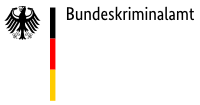
Authenticity examination of identity documents is performed by means of microscopic, spectroscopic, and material-analytic methods. It embraces the blank document form and the data content, such as photos, stamp impressions, and textual data, as well as data storage media.
During the authenticity examination of pre-printed form documents, relevant material properties, printing features, and manufacturing characteristics are compared with the equivalent characteristics of authentic samples; subsequently the deviations are evaluated.
 Detail images of a Kinegram® in a European Union visa: on the left the original, on the right the forgery
Detail images of a Kinegram® in a European Union visa: on the left the original, on the right the forgery
If, as a result of the examination, the document is classified as a forgery, then a further goal of the examination is the detection of matching manufacturing features by means of comparison with other forgeries which have already been examined. In order to solve these tasks, reference and forgery collections are maintained. Computer-aided image information systems are increasingly attaining significance in this connection, such as the Document Information System (Informationssystem Urkunden = ISU), which was developed by the Bundeskriminalamt together with the Federal Police and the Federal State Criminal Police Offices.
The ISU system pools the information held available decentrally at the specialist document services of the federal und federal state authorities. A database is at the centre of this information system. This contains high-quality images and textual descriptions of various sorts of German and international documents and stamp impressions, both for genuine and forged documents.
ISU makes this information available wherever documents are examined and controlled, i.e. not only for forensic and police investigation, but also for border controls. By means of an electronic interface, data exchange with the relevant information system of the European Union FADO (False and Authentic Documents Online) is possible.
 Query window with detailed view of the Document Information System (Informationssystem Urkunden = ISU)
Query window with detailed view of the Document Information System (Informationssystem Urkunden = ISU)
Another main area of work pursues a preventive goal, namely development projects aimed at improving the security of identity document systems against forgery. These include both the conventional elements of identity documents, i.e. the characteristics intended for the visual examination, as well as the latest developments within the field of the document technology, such as the integration of radio frequency chips (RFID) as data storage medium for personal and issuance data, as well as the computer-assisted document authentication. Thus the possibilities of testing for authenticity and of machine assisted identity verification are expanded by the adoption of biometrics.
 German passport with integrated RF chip
German passport with integrated RF chip
Outstanding German examples of identity documents featuring high-quality technical safeguards are the current German identity card and passport. The KTI was largely involved in the design of their security features. Such developments require an intensive co-operation between document manufacturers, forensic scientists and political decision makers. In the development of modern, internationally deployed travel documents, international co-ordination procedures are also necessary. Co-operation with national and international standardisation bodies has therefore become another central task.
